中英文与旅行有关的歌
北京生活二十载,我已记不清自己有多少次踏上过这座桥了,每一次都会长久的、默默的站在桥栏边,抚摸那一个个栩栩如生形态各异的石狮子眺望永定河,遐想。有时候,我会走下桥顺着河漫


北京生活二十载,我已记不清自己有多少次踏上过这座桥了,每一次都会长久的、默默的站在桥栏边,抚摸那一个个栩栩如生形态各异的石狮子眺望永定河,遐想。有时候,我会走下桥顺着河漫步,之后站在离桥较远的河的一隅,静静的眺望卢沟桥,眺望那桥上静坐了几百年的石狮子。
无论春夏,无论秋冬,无论是清晨抑或傍晚,无论是晴时还是雨中,那些石狮子,一直都是那样,或静卧,或嬉戏,或双目凝神,或仰望云天。那些憨态可掬的小狮子们,有的爬在雄狮的背上,有的偎在母狮的膝下,有的在耍绣球,有的则侧身转首,两两相对,好像在交谈着什么。无论是雄的还是雌的,它们统统幸福着快乐着。似乎世界是如此的美好,似乎一切都不曾发生过。
然而,无论是桥、是狮子,还是每一个经过桥上的我们,都不可能忘却。193777,那是一串沉痛的数字,那是一个值得我们永远纪念的日子。中国,没有人会忘记。
桥南边,有只狮子,一只耳朵,始终高高的竖起,就像一个充满警惕的卫士,时时都在倾听,倾听桥下潺潺的流水,倾听过往行人的低语……或许它还心存恐惧,恐惧那一声枪响,恐惧突然而来的袭击,恐惧那改变历史改变世界的卢沟桥事变。
说到卢沟桥事变,我想在中国是无人不知无人不晓的。早在中学时代我们就知道了它的历史。著名的卢沟桥事变,也即七七事变,它是日本帝国主义全面侵华战争的开始,也是中华民族进行全面抗战的起点。这次事变,即发生在距北京城区15公里的卢沟桥上。
1937年7月7日夜,一声枪响,惊醒了卢沟桥上的502只石狮子,也惊醒了中华大地上的每一位中国人。卢沟桥,因为这声枪响而被永远载入了历史的史册。
那一夜,日军中国驻屯军步兵旅团第1联队第3大队第8中队在宛平城外举行军事演习。一名叫志村菊次郎的士兵因为拉肚子到路旁的苞米地里解手,当他返回时队伍已经走远。因为志村是刚从国内调来的新兵,没有受过夜间辨别方向的训练,所以他在漆黑的夜里迷失了方向,与大部队失散。据此日军以失踪一名士兵为借口,带兵包围了宛平城,要求进城搜查。遭到中国守军第二十九军第三十七师二一九团团长吉星文的严词拒绝,日军联队长恼羞成怒,由此开火,宛平城的中国驻军奋起抵抗。这样就拉开了全面侵华战争的序幕。
那次战争是惨烈的!为了捍卫祖国的尊严,英勇的二十九军面对蓄谋已久的日军奋勇抗击,猖狂的恼羞成怒的日军像野狼一样包围宛平县城,并向宛平县城挥舞着屠刀。卧榻之侧,岂容他人酣睡?!第二十九军战士们在军长宋哲元、副军长佟麟阁的率领下,勇敢地拿起枪,挥起大刀,向蛮横的日军反扑,佟麟阁下达命令:“誓死与桥同生死共存亡,不得后退。”“让卢沟桥成为尔等之坟墓。”面对敌人的疯狂与凶残,英勇的官兵们顽强抵抗没有丝毫犹豫与退缩。最终,死伤惨重,副军长佟麟阁也在战争中英勇殉国。战士们的鲜血染红了卢沟桥,染红了卢沟桥上的500多只石狮子。
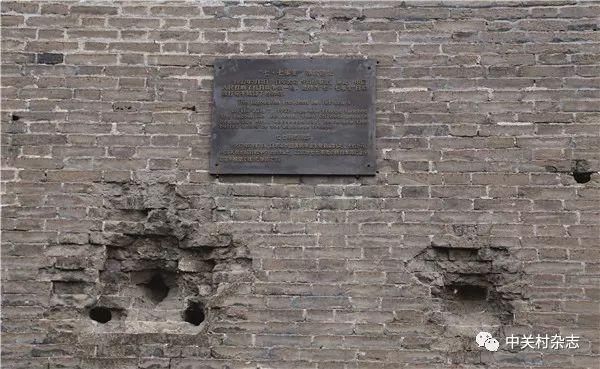
卢沟桥,这座历经沧桑的桥,这座含满屈辱的桥。它,始建于金大定29年(1189年),建成于金章宗明昌3年(1192年),是北京现存最古老的石造联拱桥。早在700年前,就因意大利旅行家马可·波罗而闻名于世。当年,马可·波罗就是从此桥进入北京的。在《马可·波罗游记》中它被形容为一座瑰丽的石桥,马可·波罗说:“她是世界上最好的、独一无二的桥。”因此外国人都称它为“马可·波罗桥”。
《帝京景物略》记载:卢沟桥跨卢沟水,金明昌初建,我正统九年修之。桥二百步,石栏列柱头,狮母乳、顾抱、负赘,态色相得,数之辄不尽。俗曰:“鲁公输班神勒也。”卢沟桥,为十一孔联拱桥,拱洞由两岸向桥中心逐渐增大,拱券跨径从12.35米至13.42米不等,桥身中央微微凸起93.5厘米,坡势平缓。河面桥长213.15米,加上两端的引桥,总长266.5米。桥身总宽9.3米,桥面宽7.5米。桥两侧雁翅状,桥面呈喇叭口状,入口处宽32米。桥面两侧设置石栏,南侧有望柱140根,北侧有141根。望柱间距约1.8米至2米,柱高1.4米。柱间各嵌石栏板,栏高约0.85米。整个桥身都是石体结构,关键部位均有银锭铁榫连接,为华北最长的古代石桥。而最有特色的,则是桥墩的造法。墩下面呈船形,迎水面砌作分水尖,外形像一个尖尖的船头,其作用在于抗击流水的冲击。
桥上的石刻十分精美,每一根柱头上都刻着莲座,座下为荷叶墩,柱顶刻有众多的石狮子。望柱上雕有大小不等、形态各异、数之不尽的石狮子。石狮子大概有好几百只,具体有多少只?我不知道。多少次,我试图搞清楚它们的数目,但数来数去,眼花缭乱,从来也没有数清楚过,最后只有作罢。民间有句歇后语说:“卢沟桥的石狮子——数不清”。听当地老人们说,1962年有关部门专门派人搞了一次清点,逐个编号登记,清点出大小石狮子共485个,至此,应该说是“迷团冰释”了。孰料,在1979年的复查中,又发现了17个。这样,大小石狮子的总数共为502个。然而,这个数字正确与否?谁也不能打保票。
每一次置身在卢沟桥上,看着那桥上的一栏一狮,我都会不由感叹古人的心灵手巧和无尽的智慧。从《帝京景物略》记载民间传说是鲁国公输班(即鲁班)的神妙雕刻,可见做工多么精良考究。天下名桥各擅胜场,而卢沟桥却以高超的建桥技术和精美的石狮雕刻独标风韵,誉满中外,实在是古今世界上一大奇观。
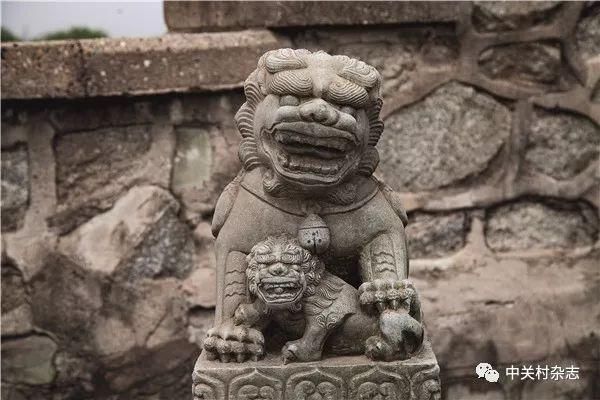
到北京,可以不登长城不去故宫,但不可不到卢沟桥。因为,它不仅是一座独特的做工精良的独一无二的古老的石造联拱桥,它身上还承载着革命英雄的梦想,屹立着中华魂、民族魄。它见证了一个民族的苦难,陪伴着一个民族的成长。那一只只狮子,每一只都有故事,每一只都能给你讲出一段故事。
记得刚来北京的第二天,我就迫不及待踏上了这座神圣的桥。知道他身处丰台区,知道他横跨北京的母亲河—永定河。从此我便记住了丰台、记住了永定河、记住了“卢沟晓月”,记住了明代邹缉《卢沟晓月》的那首诗:“河桥残月晓苍苍,照见卢沟野水黄。树入平郊分淡霭,天空断岸露微光。北趋禁阙神京近,南去征车客路长。多少行人此来往,马蹄踏尽五更霜。”从此诗可见卢沟桥上当年的繁盛景象。
卢沟晓月,为“燕京八景”之一。月圆的夜晚,尤其是在中秋之夜,站在卢沟桥上仰望那一泓明月,分外明丽皎洁。月光下卢沟桥上那一个个神圣雄壮的狮子,又给月增加了几分肃穆和庄严。或许是卢沟桥的宏伟坚定,或许是母亲河的温婉开阔、海纳百川,站在卢沟桥上看月,总有不一样的感觉。那月亮,似乎是要说话的、似乎是裹着一缕仙气的,圣洁、高贵、优雅、迷离。似黛的远山,在美丽的月光下,与桥、与河、与月,构成了一幅意境幽远的水墨画。这时候,你会体会到乾隆皇帝那“半钩留照三秋淡,一练分波平镜明。”两句诗的意境。卢沟桥,氤氲在蒙蒙的月光下夜色中,桥下的水如镜子般静静的流淌。桥上,502只大小形态各异的狮子从头至尾守卫着这座古老的石拱桥,无声的静默、肃立,无声的嬉戏。那是一种怎样的悲怆和静寂!
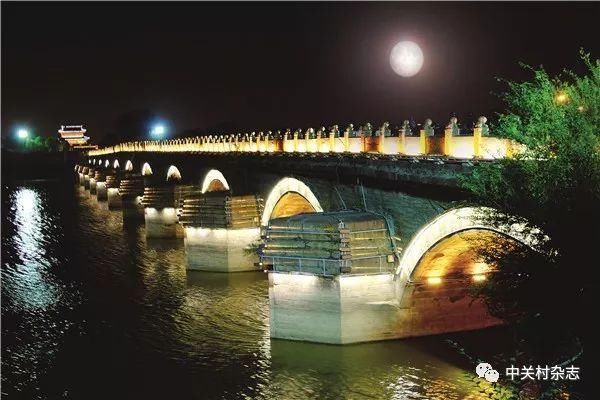
我喜欢穿着绵布鞋走在卢沟桥的桥面上,那桥面,是由一块块大小不一凸凹明显的打磨光滑的青条石镶嵌而成的,走在上面,有一种沧桑又坚实的厚重的感觉,能嗅到岁月的味道。
顺着桥北行,就进了宛平城。宛平城在卢沟桥北,古代又叫“拱北城”。那是一座建于明崇祯十年的城池,城不大,方方正正的,东西长约640米,南北长仅320米,东西、南北走向都不及二里,只设了南北两个城门。然因是卫城,城门威严厚重。“局制虽小,而崇墉百雉,俨若雄关”,城门厚度约五米左右,敦实程度堪比北京城内的永定门和前门等。一条永定河横亘在南面,南门对着的卢沟桥直扼京畿咽喉要道,成了连接外部的唯一通道,重要关口。那时候,卢沟桥是县城的繁要街市。我常常站在卢沟桥上闭目遐思,想到曾经的宛平城,曾经的卢沟桥上车行马走行人往复的繁荣景象,有如张择端清明上河图里的某处景致,天下太平,人民安居乐业……永定河的水从桥下潺潺流过,在那个没有污染的年代,水一定是清澈的,否则怎会有陈高的那句“山头白日照清波”呢!“卢沟桥西车马多,山头白日照清波。毡卢亦有江南妇,愁听金人出塞歌。”如今,桥上已无车马繁荣,桥下也是清波不见,浑水成潮,只留下金人掠妇的传说和斑驳的城墙以及战争过后留下的那些大大小小、密密麻麻的枪弹洞,诉说着那曾经的峥嵘的历史岁月,时时提醒我们,不要忘记英烈们为守卫祖国流下的鲜血以及牺牲的宝贵生命,更提醒世界要珍惜这来之不易的和平。
我不知道,我为何那么喜欢到这座桥上来。我常常站在桥上思索生命,思索人生,四海为家日,萧萧芦荻秋。我看卢沟桥多沧桑,料卢沟桥看我应如是。每一次,那一只只历尽沧桑依然鲜活如故的石狮子都让我这个在城市中漂泊、在职场中打拼得伤痕累累疲惫不堪的人如打了鸡血般充满力量。那数不清的石狮子们,虽然经过战争的洗礼,浸染了鲜血,披上了岁月的风霜,但依然是那样的顽强健壮,我又凭什么被生活的不堪压垮呢?我又有什么理由碰到点挫折就一蹶不振呢?
卢沟桥那几百根石柱子上蹲着的石狮子,总能给我无尽的力量,雨中的它们昂扬,夕阳下的它们雄壮,它们,曾经面对日军的枪林弹雨咆哮过;它们,因为亲眼目睹一个个在战火中倒下的战士哭泣过。然而,他们依然那么坚定地挺直身子,把悲伤藏进心里,每一天,伴着北斗星光迎来送往。
如今,硝烟早已散尽,宛平城内绿树成荫,永定河畔蝶舞花香,河面上是成片成簇的荷花。盛夏的荷花是永定河上一道靓丽的风景,那绵延数十里的荷花啊,无论在晴时雨时,阳光下月光里,都是如此的动人心魄!我曾看过杭州西湖的荷花,一小簇一小簇,不成气候,似乎太少了;我也曾看过洪泽湖湿地的万亩荷花,层层叠叠挨挨挤挤的,又似乎太多太野了,而永定河上的荷花呢?永定河的荷花是园艺家们利用原本自然的条件稍稍做了些恰到好处的修整后形成的。高低仰俯、疏密聚散之间,是那样的恰到好处,每一处都像是自然天成,又像是匠人手下得意的作品,每一处都与众不同、每一处都独具匠心。
丽日晴空下,撑一把小伞,站在河岸边眺望,满池的荷花水草从这岸逶迤到那岸,河面如此绵长开阔。风从远方吹过来,荷塘中洇洇的水气从河面上泛起,突然就有了股凉意,清凉凉的沁人心脾,让人灵魂安稳,身心妥贴。灵魂随着荷香波动,身心便在水、花、柳和谐相依的幽香里舒适了、干净了。
雨中的永定河是别有一番韵味的,穿一身蓑衣,持一条长杆,稳坐于荷塘前。在斜斜的如织的细雨中,漫天漫地的潮湿里,听雨打荷叶的声音,看晶莹莹的水珠儿在荷叶上轻盈地舞动,画里画外,都干净着、澄澈着、平和着。在这心神俱宁的安然与满足里,看荷听雨,畅饮一湖菡萏的甘露,悠然垂钓,那是一种怎样闲适雅致的神仙生活啊!
月下的永定河更美。《荷塘月色》,那是朱自清先生留下的千古名篇,可我敢说,永定河里的荷塘月色要比朱自清笔下的荷塘美得多。有月的夜晚,立于永定河畔,不管是满月还是半月,都是别有一番韵味的。月光洒在河面上,洒在满池的荷叶荷花的身上,呈现出斑斑驳驳的倩影。有风过时,月亮的倒影就在水中涤荡,与袅袅娜娜的荷花对舞着,如琴瑟般优美和谐。高高低低参差有致的荷叶婆娑着身姿,用月光涤洗着自己娇绿圆润的身子,那婀娜优雅的姿势,让人的心禁不住颤动。偶尔几声蛙鸣,远远近近,划破月色、划破夜空,愈显出了月夜的静。月上不时掠过几朵淡云,变幻着形态,悄悄地飞过来,又悄悄地飞过去,像是在和谁捉迷藏……远处的卢沟桥一片黛色,隐隐约约的,若明若暗,岸上的毛柳慵懒地舒展着身子,摇摇摆摆,似乎在给水中的香荷唱着催眠曲。云淡,风轻,荷酣,月明,柳舒适,蛙惬意。淡淡荷香,幽幽风致,花依水,水恋花,花影交错,月影重叠,荡荡叠叠,宛若仙界。“万柳堂前数亩池,平舒云锦盖涟漪。谁知咫尺京城外,便有无穷万里思。”这样的景致,一定会让卢沟桥上的石狮子暂时忘记那战争留下的伤痛。然而,城墙上的累累弹洞,又会时时让它们想起侵华日军的狰狞狂妄,它们的心里,藏着太多的悲伤,然而他们不言不语不悲不怒,那是一颗怎样淡然和从容的心啊!
当历史老人把时间推到了二十一世纪,它们,已不再是卫城的将士,然而,蹉跎岁月中,人们并不曾把它们遗忘,因此,它们并不曾失去往日的辉煌。它们和桥,永远是历史的见证人,它们,像一位位身经百战的老将军,将永远受到人们的爱戴和敬仰。
我在桥上看风景,看风景的人在桥头看我。漫步在卢沟桥上,我也是行人。唯有它们能永存于世间,不断向后人讲述那段惨烈的历史,并时时告诫后人:“前事不忘,后事之师”,“落后就要挨打”。它们的身上,肩负着激励中华子孙永远奋发图强的重任。
卢沟桥,携着几百只石狮子,一年一年一月一月,涉过漫长的岁月,静静的横跨在永定河上。连接着昨天和今天,一个岁月沟壑的接壤!当日寇铁蹄踏上他们不屈不挠的身躯,它们,像一头醒狮发出惊天的怒吼。它们的吼声,震动了沉寂的大地,激起了中国军民的英勇抵抗,惊醒了所有爱国同胞。那悲壮的歌声唤起无数优秀儿女奔赴抗日战场,从华北到江南,到处都点燃了抗日的烽火,国民军、八路军、新四军和世界反法西斯联盟共同筑起了一道抗击日寇的铁壁铜墙,从平型关到台儿庄,到处是抗日战场。经过八年浴血抗战,终于获得了反法西斯战争的伟大胜利,中国人民结束了上百年丧权辱国历史站起来了!东方睡狮在卢沟桥502只狮子的召唤下睡醒了!
忘记历史,就等于背叛过去。然而,记住历史,也不是为了记住仇恨,而是为了历史不再重演。
晴日时节,站在卢沟桥上往北看去,依稀可见两公里外世界园博园的绰约身姿,挺拔秀丽的永定塔携着一众绿云倩影撞入眼帘。
2009年初,北京市政府决定由北京市园林局和丰台区代表北京市申办第九届中国国际园林博览会。经过几年夜以继日地精心设计建设,2013年5月,如期向全世界亮出了美丽容颜。园博园即园林花卉博览会公园,位于北京西南部丰台区境内永定河畔绿色生态发展带一线,总面积267公顷,东临永定河新右堤,西至鹰山公园,南起梅市口路,北至莲石西路,依托永定河道,与卢沟桥遥相呼应,历史文化氛围浓郁,地形多变,山水相依,颇具特色。许多人并不知道,园博园主景区锦绣谷原为永定河河床的一部分,曾作为采砂场,后成为建筑垃圾填埋场,至园博会筹建仍留有一个面积为10公顷、深达30米的大沙坑。设计师利用既有地形,将现状垃圾填埋场改造为下沉式景观花园,取传统的“燕京八景”之精髓,内设有燕台大观、风篁清听、云台叠翠、云飞霞起、绿屿花洲、林天霞影、采芳云径等景区和大型山石叠水、花卉瀑布等景观,成为北京园博会生态修复的新亮点,完美诠释了“化腐朽为神奇”的生态理念。过去,我每逢举家出游或邀朋踏青,总要绕过那一带,因为脏乱难闻的环境和气味让人刺目掩鼻,想不到如今却成了京内外民众、当然更是我流连忘返的好去处。蜗居京城斗室多年,半小时生活圈能有园博园这样一处超级大氧吧和绝佳后花园,也算是我们这些北漂客的福音了。
近二三十年,我曾经沿着永定河漫游,曾经留心观察过北京和中国许多城市的街街巷巷、沟沟汊汊、角角落落,发现绿树鲜花和公园景致越来越多了。是的,中国近几十年几乎没再飘进外域的战争硝烟,没有动乱,没有折腾,没有饥馑,在一片起重机和脚手架的背景中建设起了世界第二大经济体系,人民生活在幸福和谐安详里。未来十年、几十年、上百年是否还会如此呢?卢沟桥是否还会再起枪声呢?站在这条流淌着历史、流淌着岁月的永定河卢沟桥上,我经常陷入沉思。卢沟桥为何屹立近千年不倒?因为它的设计、基础、建设臻于完美,一个国家、一个民族,倘能做到内强自省,遇浪不惊,相信也会坚固如斯。
人事有代谢,往来成古今。江山留胜迹,我辈复登临。永记历史,强我中华,卢沟桥,一座精神的丰碑,中华民族坚硬的脊梁柱。我们,要时时瞻仰时时光顾,不要冷落了他们,孤寂了战士的魂魄。
哦,我心河中的卢沟桥!
The Lugou Bridge in my heart
Author Hua Shuangyu(Beijing)
Translator Jin Zi(Beijing)
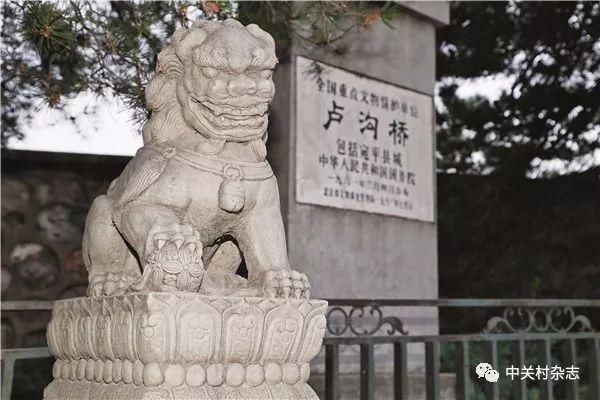
After living in Beijing for 20 years, I can't remember how many times I have set foot on this bridge. Every time I will stand on the edge of the bridge for a long time, and I will touch the stone lions of different shapes and shapes. River, delusion. Sometimes, I will walk down the bridge and walk along the river, then stand on the river farther from the bridge, quietly look at the Lugou Bridge, and look at the stone lion that sat quietly on the bridge for hundreds of years.
Whether it is spring or summer, whether it is autumn or winter, whether it is early morning or evening, whether it is sunny or rain, those stone lions have always been like that, or lying still, or playing, or looking at the sky, or looking up at Yuntian. Some of the embarrassing little lions climbed on the backs of the lions, some kneeling under the lioness's knees, some playing hydrangea, and some turning sideways, opposite each other, as if talking. Whether male or female, they are happy and happy. It seems that the world is so beautiful, it seems that nothing has happened.
However, whether it is a bridge, a lion, or every one passing through the bridge, it is impossible to forget. 193777, that is a series of painful numbers, it is a day worthy of our eternal commemoration. No one in China will forget.
On the south side of the bridge, there is a lion, an ear, always standing tall, like a guardian full of vigilance, always listening, listening to the water flowing under the bridge, listening to the whispers of past pedestrians... Maybe it still exists Fear, fear of a gunshot, fear of sudden attacks, fear of the Lugouqiao Incident that changed history and changed the world.
Speaking of the Lugouqiao Incident, I don’t think anyone in China knows it. We knew its history as early as the middle school. The famous Lugouqiao Incident, also known as the July 7 Incident, was the beginning of the Japanese imperialist war of full-scale aggression against China and the starting point for the Chinese nation to carry out a comprehensive war of resistance. The incident occurred on the Lugou Bridge, 15 kilometers from the urban area of Beijing.
On the night of July 7, 1937, a gunshot roused the 502 stone lions on the Lugou Bridge and awakened every Chinese on the land of China. Lugou Bridge was forever recorded in the annals of history because of this gunshot.
That night, the 8th Squadron of the 3rd Brigade of the 1st Wing of the Japanese Army’s Infantry Brigade, the Japanese Army, held a military exercise outside Wanping City. A soldier named Shimura Kijiro broke his hand from the diarrhea to the glutinous rice field by the roadside. When he returned, the team had already gone. Because Zhicun was a recruit newly recruited from the country and did not receive training in the direction of nighttime discrimination, he lost his way in the dark night and was separated from the big forces. According to this, the Japanese army used the missing soldier as an excuse to take the soldiers around Wanping City and asked to go to the city to search. The stern words of Ji Xingwen, head of the 219th Regiment of the 37th Division of the 25th Army of the Chinese garrison, were rejected by the Japanese army captains. The Chinese garrison in Wanping City rose to resist. This opened the prelude to a full-scale war of aggression against China.
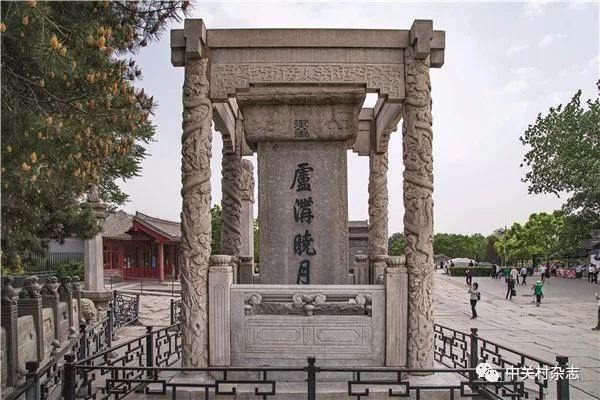
That war was fierce! In order to defend the dignity of the motherland, the heroic 29th Army fought bravely against the long-planned Japanese army. The arrogant and angered Japanese army surrounded Wanping County like a wild wolf and waved a butcher knife to Wanping County. On the side of the couch, let others sleep? ! Under the leadership of the military commander Song Zheyuan and the deputy commander Qilin Pavilion, the twenty-ninth army soldiers bravely took the guns, waved the broadsword, and counterattacked the arrogant Japanese army. The Kirin’s commander: "Oath to death and the bridge to live and die together "Do not retreat." "Let the Lugou Bridge become the tomb of Er." In the face of the madness and ferocity of the enemy, the heroic officers and men have no hesitation and retreat. In the end, the death and injury were heavy, and the deputy commander, Kirin Court, also bravely fought the country in the war. The blood of the soldiers dyed the Lugou Bridge and dyed more than 500 stone lions on the Lugou Bridge.
Lugou Bridge, this vicissitude bridge, this humiliating bridge. It was built in the 29th year of Jin Dading (1189) and was built in the 3rd year of Jinzhangzong Mingchang (1192). It is the oldest surviving stone arch bridge in Beijing. As early as 700 years ago, it was famous for the Italian traveler Marco Polo. At that time, Marco Polo entered Beijing from this bridge. In "Marco Polo's Travels" it was described as a magnificent stone bridge, Marco Polo said "She is the best and unique bridge in the world." So foreigners call it "Marco Polo Bridge" ".
"The Emperor Jingjing Scenery" records: Lugou Bridge spans Lugou water, Jin Mingchang was first built, and I was repaired in nine years. Two hundred steps of the bridge, the stone column column head, the lion breast, Gu Bao, negative 赘, the state of color, the number is inexhaustible. Vulgar: Lu Gong lost the class of God also. "Lugou Bridge is an eleven-hole arch bridge. The arches gradually increase from the two sides to the center of the bridge. The span of the arch is from 12.35 meters to 13.42 meters. The center of the bridge is slightly convex 93.5 centimeters. The slope is gentle. The bridge length is 213.15. Meters, plus the approach bridges at both ends, the total length is 266.5 meters. The total width of the bridge is 9.3 meters and the bridge deck is 7.5 meters wide. The bridges are wing-shaped on both sides, the bridge surface is flared, and the entrance is 32 meters wide. There are 140 pillars on the south side and 141 pillars on the north side. The distance between the pillars is about 1.8 meters to 2 meters, and the height of the columns is 1.4 meters. The columns are inlaid with columns and the height of the columns is about 0.85 meters. The whole bridge is The stone structure, the key parts are silver ingots and irons, which is the longest ancient stone bridge in North China. The most distinctive feature is the construction of the pier. The pier is shaped like a boat, and the water surface is built as a water-tip. A pointed bow that acts to resist the impact of running water.
The stone carvings on the bridge are very beautiful. Each column is engraved with a rosette, with a lotus leaf pier and a stone lion carved on the top of the column. On the pillars, there are stone lions of different sizes and shapes. There are probably hundreds of stone lions, how many? I do not know. How many times, I tried to figure out the number of them, but when I counted it, I was dazzled, never figured out, and finally only gave up. The folks have a saying after the break: "The stone lions of the Lugou Bridge are countless." Listening to the local old people said that in 1962, the relevant departments specially sent people to do an inventory, register one by one, and counted 485 large and small stone lions. At this point, it should be said that it is "the fascinating ice release." Unexpectedly, in the 1979 review, 17 more were discovered. Thus, the total number of large and small stone lions is 502. However, is this number correct or not? No one can play a security ticket.
Every time I was on the Lugou Bridge, looking at the lions on the bridge, I could not help but sigh the ingenuity and endless wisdom of the ancients. The folk legends recorded in the "Bijing Scenery" are the wonderful carvings of Lu Guogong's class (ie Luban), showing how sophisticated the workmanship is. The famous bridges in the world are all good at winning the field, but the Lugou Bridge is superbly built with its superb bridge construction technology and exquisite stone lion carvings. It is a great wonder in the world.
When you arrive in Beijing, you can't go to the Forbidden City without going to the Great Wall, but you can't go to the Lugou Bridge. Because it is not only a unique and well-built unique ancient stone arch bridge, it also carries the dream of a revolutionary hero, stands the soul of China, the nation. It witnessed the suffering of a nation and accompanied the growth of a nation. That one lion, each with a story, each can tell you a story.
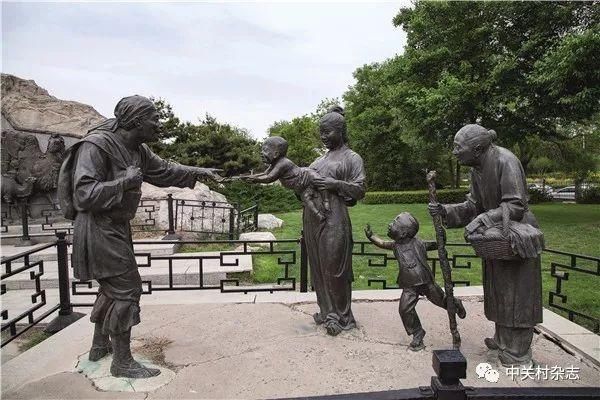
I remember that the next day I came to Beijing, I couldn’t wait to embark on this sacred bridge. I know that he is in Fengtai District and knows that he is crossing the mother river of Beijing, Yongding River. From then on, I remembered Fengtai, remembered Yongding River, remembered Lugou Xiaoyue, and remembered the poem of Zou Yu’s "Lugou Xiaoyue" in the Ming Dynasty; "The river bridge was a dying moon, and it saw Lugou. Wild water yellow. The trees enter the Pingjiao sub-division, the sky is broken and the surface is shimmering. The north tends to ban the gods and Beijing, and the south to the levy of the passengers. The number of pedestrians is here and the horseshoes are going to do five more frosts." From this poem can be seen on the Lugou Bridge The prosperity of the year.
Lugou Xiaoyue is one of the “Yanjing Eight Views”. On the full moon night, especially on the Mid-Autumn Festival night, standing on the Lugou Bridge and looking up at that bright moon, it is extraordinarily bright and clean. The sacred and majestic lions on the Lugou Bridge under the moonlight added a bit of solemnity and solemnity to the moon. Perhaps the grandeur of the Lugou Bridge, perhaps the warmth of the mother river, the vastness of the river, standing on the Lugou Bridge to see the moon, there is always a different feeling. The moon, it seems to be talking, seems to be wrapped in a fairy, holy, noble, elegant, blurred. The distant mountains, in the beautiful moonlight, and the bridge, the river, and the moon, constitute a pair of ink paintings with a distant artistic conception. At this time, you will realize that the Emperor Qianlong’s "half-hooks are left in the three autumns, and one is divided into waves and mirrors." Lugou Bridge, in the moonlight under the moonlight, the water under the bridge flows quietly like a mirror. On the bridge, 502 lions of different sizes and sizes guarded the ancient stone arch bridge from beginning to end, silent silence, silence, and silent play. What kind of grief and silence is that !
I like to walk on the bridge deck of the Lugou Bridge wearing cotton shoes. The bridge deck is inlaid by a polished smooth blue stone with different sizes and convexities. Walking on it, there is a vicissitude and solid weight. I feel that I can smell the taste of the years.
Follow the north of the bridge and enter Wanping City. Wanping City is in the north of Lugou Bridge. In ancient times, it was called Gongbei City. It is a city built in Ming Chongzhen for ten years. The city is not big and square. The east and west are about 640 meters long, and the north and south are only 320 meters long. The east and west, north and south are less than two miles. Only two north and south gates are set. . However, because of the Acropolis, the gates are majestic and heavy. "The bureau system is small, but the Chongzhen hundred 雉, 俨若雄", the thickness of the city gate is about five meters, the degree of honesty is comparable to the Yongdingmen and Qianmen in Beijing. A Yongding River straddles to the south, and the Lugou Bridge facing the south gate directly slams into the throat of the Jing-Jing, becoming the only passage connecting the outside, an important gateway. At that time, Lugou Bridge was a busy market in the county. I often stand on the Lugou Bridge and close my eyes. I think of the once Wanping City. Once upon a time, the Lugou Bridge was a place where the pedestrians walked and walked, and there was a scene like Zhang Zhiduan’s clearing in the river. The world was peaceful and the people lived and worked in peace... .. The water of the Yongding River flows through the bridge. In the era when there is no pollution, the water must be clear. Otherwise, how can Chen Gao’s phrase “mountain white and clear waves”? "Lugou Bridge West Car Maduo, the hills are white and clear. The Lulu also has Jiangnan women, and listen to the Jin people out of the song." Today, there are no horses and horses on the bridge, the bridge is also clear, the water is in the tide, Only the legends of the golden maidens and the mottled walls and the large, small and dense bullet holes left behind after the war, telling the history of the past, remind us, don’t forget the heroes as guards. The blood shed by the motherland and the precious life of sacrifice also remind the world to cherish this hard-won peace.
I don't know why I like to come to this bridge so much. I often stand on the bridge thinking about life, thinking about life, the whole world is the home of the day, Xiao Xiao Lu Qiuqiu. I saw that there are many vicissitudes of the Lugou Bridge. I expected the Lugou Bridge to look like I should. Every time, the stone lion that only survived the vicissitudes of life has made me a man who wanders in the city and struggles in the workplace, and the tired and exhausted people are full of power like chicken blood. The countless stone lions, though baptized by war, were soaked with blood and draped in the weather of the years, but still so stubborn and strong, why can I be overwhelmed by what is life? What reason do I have to fail when I encounter some setbacks?
The stone lions on the hundreds of stone pillars of Lugou Bridge always give me endless power. They are high in the rain, and they are magnificent in the sunset. They used to face the Japanese guns and rain. They, because they witnessed one The soldiers who fell in the flames of war, wept. However, they are still so firm and straight, hiding their sorrow into their hearts, and every day, greeted with the Big Dipper.
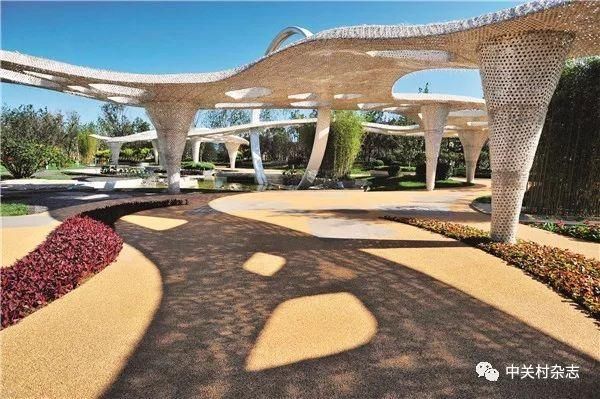
Nowadays, the smoke has already been exhausted. Wanping has a tree-lined city, and the butterfly dances on the Yongding River. The river is a cluster of lotus flowers. The lotus in the midsummer is a beautiful scenery on the Yongding River. The lotus flowers that stretch for dozens of miles are so touching in the moonlight and the moonlight in the sun! I have seen the lotus flowers of Hangzhou West Lake, a small cluster and a small cluster, it is not a climate, it seems too little; I have also seen the 10,000-acre lotus in the Hongze Lake wetland, stacked and stacked, it seems too How wild is it, and the lotus on the Yongding River? The lotus flower of the Yongding River was formed by the horticulturists using the original natural conditions and doing some just the right trimming. Between high and low elevations and dense gatherings, it is just right. Every place is like natural heaven, and it is like a work of artisans. Every place is different and every place is unique.
Under the clear sky, Li Tian held a small umbrella and stood on the bank of the river. The lotus pond filled the pool from the shore to the shore, the river was so long and wide. The wind blows from afar, and the water in the lotus pond rises from the river surface. Suddenly, there is a cool feeling, and the cool and cool people are refreshing, making the soul stable and physically and mentally fit. As the soul fluctuates with the fragrance, the body and mind are comfortable and clean in the fragrance of water, flowers and willows.
The Yongding River in the rain has a unique charm. Wearing a coat and holding a long pole, sit firmly in front of the lotus pond. In the slanting weaving drizzle, in the dampness of the sky, listening to the sound of the lotus leaf in the rain, watching the crystal clear water pearls dance lightly on the lotus leaf, the paintings are clean, Clear and peaceful. In this peace of mind and satisfaction, look at the lotus, drink a nectar of the lake, and leisurely fishing, that is a kind of leisurely and elegant fairy life!
The Yongding River under the moon is more beautiful. "Hollywood Moonlight", that is the famous article left by Mr. Zhu Ziqing, but I dare say that the moonlight in the Yongding River is much more beautiful than the lotus pond in Zhu Ziqing's pen. On a moonlit night, standing on the banks of the Yongding River, whether it is a full moon or a half moon, there is a unique charm. The moonlight sprinkled on the river and sprinkled on the lotus leaf of the lotus pond, showing a patchy shadow. When the wind is out, the reflection of the moon is washed in the water, dancing with the lotus flower of Nana, such as the beautiful and harmonious. The high and low, high and low, the lotus leaf, the posture of the lotus leaf, washes his green and round body with the moonlight, the graceful posture of the graceful, the heart can not help but tremble. Occasionally a few frogs, far and near, scratching the moonlight, scratching the night sky, the more the moonlight night. From time to time, I passed a few light clouds, changing the shape, flying quietly over, and flying quietly, like who is hiding and hiding... The Lugou Bridge in the distance is a twilight, faint, if it is dark, on the shore Mao Liu lazily stretched his body and swayed, seemingly singing a lullaby to the fragrant lotus in the water. The clouds are light, the wind is light, the lotus, the moon is bright, the willow is comfortable, and the frog is comfortable. Light lotus, faint wind, flowers and water, water love flowers, flowers and shadows interlaced, moon shadows overlap, swaying, like a fairy. "There are several acres of pools in front of Wanliutang, Pingshuyunjin cover. Who knows that there are infinite Wanlisi outside the capital city." Such a landscape will surely make the stone lions on the Lugou Bridge temporarily forget the pain left by the war. However, the huge holes in the walls will remind them of the arrogance of the Japanese invaders. In their hearts, there are too many sorrows hidden. However, they don’t say no words, no anger, no anger, how is it light? And calm heart!
When the old people of history pushed the time into the 21st century, they were no longer the soldiers of the Acropolis. However, in the years, people did not forget them. Therefore, they did not lose the glory of the past. They and the bridge are always witnesses of history. They, like a veteran general who has been through battles, will always be loved and admired by people.
I saw the scenery on the bridge, and the people watching the scenery looked at me at the bridge. Strolling on the Lugou Bridge!

中关村杂志——新经济·新科技·新文化
本文来自投稿,不代表本站立场,如若转载,请注明出处。
